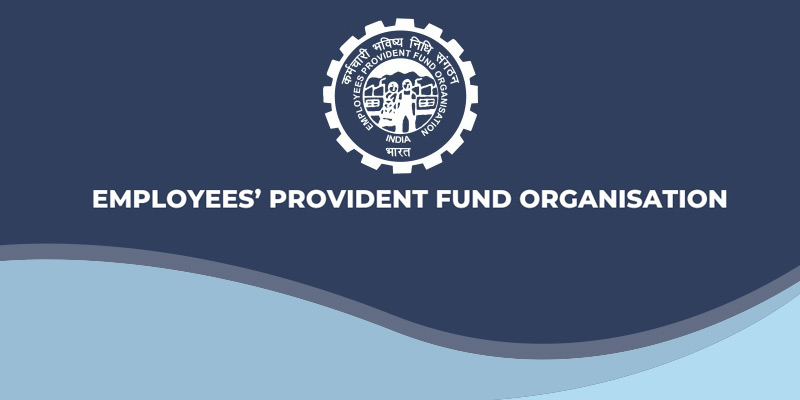- India
- Jan 29
EPFO launches ‘Nidhi Aapke Nikat 2.0’
• Employees’ Provident Fund Organisation (EPFO) has launched a massive district outreach programme in all the districts of the country through a revamped Nidhi Aapke Nikat programme.
• The aim of this programme is to reach all the districts of the country on the same day — 27th of every month.
• Over the years, EPFO has taken several measures and reforms for the benefit of its subscribers. In 2015, ‘Bhavishya Nidhi Adalat’ was renamed as ‘Nidhi Aapke Nikat’.
• In 2019, the outreach of the Nidhi Aapke Nikat programme was further improved by inviting participation of trade unions. In 2021, for grievances redressal of pensioners, an exclusive platform monthly Pension Adalat was initiated.
Highlights of Nidhi Aapke Nikat 2.0:
• Under Nidhi Aapke Nikat 2.0, EPFO will reach out to the stakeholders, thereby increasing accessibility and visibility of the organisation, in all the districts of the country.
• It will not only be a grievance redressal platform and information exchange network for the employers and the employees, but also a platform for exchange of information with the district level authorities of various state and central government departments.
• In this programme, a help desk will be created where members will get the online services like filing of online claim, etc.
• Grievance redressal of the members will be done on the spot and in case any grievance could not be redressed on the spot, it will be registered on the grievance portal of EPFO and will be resolved on priority.
• By strengthening and increasing the reach of Nidhi Aapke Nikat as a district awareness camp and outreach programme, more than 500 districts of the country which do not have EPFO offices will be covered and social security and seamless services can be provided to the members.
Employees’ Provident Fund Organisation (EPFO)
• The Employees’ Provident Fund came into existence with the promulgation of the Employees’ Provident Funds Ordinance in November, 1951, with a view to provide for the institution of provident funds for employees in factories and other establishments.
• It was replaced by the Employees’ Provident Funds and Miscellaneous Provisions Act on March 4, 1952.
• The EPFO is responsible for administration of the Employees Provident Funds and Miscellaneous Provisions Act, 1952.
• The Act extends to the whole of India.
• The Employees’ Provident Fund Organisation (EPFO) is a statutory body under the ministry of labour and employment.
• It administers the Act and the schemes under the overall supervision of the Central Board of Trustees.
• The Central Board (EPF) is a tripartite statutory body constituted by the central government under Section 5A of the Act. It has the responsibility to administer the Act and the three schemes framed under the Act. The Union minister for labour & employment is the chairman of the Board. The tenure of the Board is five years.
Three schemes have been framed under the Act:
1) Employees’ Provident Fund Scheme
• Employees’ Provident Fund Scheme, 1952 is the first scheme under the EPF & MP Act, 1952, that came into effect on November 1, 1952. It is a statutory benefit available to the employees post retirement or when they leave the services. In case of deceased employees, their dependents are entitled for the benefits.
• Under the scheme both employers and employees make their contribution towards the fund. Interest earned on the amount is credited to the members Provident Fund Account (PF accounts) and is available to the employees at the time of retirement or exit from employment as the case may be, provided certain conditions are fulfilled.
• The scheme mandates coverage of all establishments under its scheduled list of establishments/factories, employing 20 or more persons.
2) Employees’ Pension Scheme
• The Employees’ Pension Scheme, 1995 (EPS) came into effect on November 16, 1995. With its introduction, the erstwhile Employees’ Family Pension Scheme, 1971 (EFPS) ceased to operate and all the assets and liabilities of this scheme were transferred and merged with the Employees’ Pension Fund.
• The benefits and entitlements of the beneficiaries under the old scheme (EFPS) are protected and continued under the new EPS, 1995.
• EPS has been designed on the principles of a “Defined Contribution Defined Benefit” Social Insurance Scheme and adopts “actuarial principles” for ensuring long term financial viability. The scheme aims at providing economic sustenance during old age and survivor-ship coverage to members and their families.
• The Employees’ Pension Scheme, 1995 is funded by diversion of an amount equivalent to 8.33 per cent of the monthly wages from the monthly employer’s share of Provident Fund contributions as well as a contribution of 1.16 per cent of the monthly wages (limited to the amount payable on pay of Rs 15,000 only) by the central government.
3) Employees’ Deposit Linked Insurance Scheme
• Employees’ Deposit Linked Insurance Scheme-1976 (insurance scheme) came into force on August 1, 1976. This scheme is supported by a nominal contribution by the employers. No contribution is payable by the employee for availing the insurance cover.
• Insurance scheme is applicable to all factories/establishments to which the EPF Act, 1952 applies. All the employees who are members of the provident fund are members of this scheme.
• EPFO account holders become eligible for assured life insurance benefits of up to Rs 7 lakh, without having to pay any amount as premium.
• Minimum assurance benefit of Rs 2.5 lakh if the employee was in continuous service in the 12 months prior to their death.
Manorama Yearbook app is now available on Google Play Store and iOS App Store

